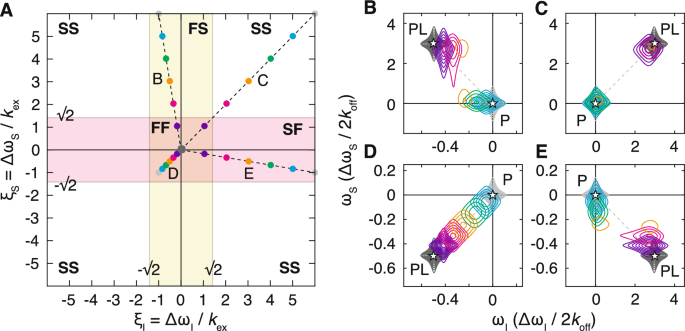Delta Software For Nmr Spectra
- Delta Software For Nmr Spectra Data
- Delta Software For Nmr Spectra Lab
- Delta Software For Nmr Spectra Software
- Delta Software For Nmr Spectral
Chemical Shifts
The NMR spectra is displayed as a plot of the applied radio frequency versus the absorption. The applied frequency increases from left to right, thus the left side of the plot is the low field, downfield or deshielded side and the right side of the plot is the high field, upfield or shielded side (see the figure below). The concept of shielding will be explained shortly.


The position on the plot at which the nuclei absorbs is called the chemical shift. Since this has an arbitrary value a standard reference point must be used. The two most common standards are TMS (tetramethylsilane, (Si(CH3)4) which has been assigned a chemical shift of zero, and CDCl3 (deuterochloroform) which has a chemical shift of 7.26 for 1H NMR and 77 for 13C NMR.
11 Dearborn Road, Peabody, MA 01960. Please direct questions or comments about Delta or JEOL NMR spectrometers to the discussion boards. Integration of 1H NMR resonances The area under an NMR resonance is proportional to the number of nuclei that give rise to that resonance. 2 6 integral d = 3.6 d = 1.2 The relative area under the resonances at d= 3.6 and 1.2 is 1:3 The integral is superimposed over the spectrum as a “stair-step” line.

The scale is commonly expressed as parts per million (ppm) which is independent of the spectrometer frequency. The scale is the delta (δ) scale.
Delta Software For Nmr Spectra Data
The range at which most NMR absorptions occur is quite narrow. Almost all 1H absorptions occur downfield within 10 ppm of TMS. For 13C NMR almost all absorptions occurs within 220 ppm downfield of the C atom in TMS.
Delta Software For Nmr Spectra Lab

WINDNMR-Pro (DNMR71.EXE) is a Windows program (Author) for simulating high resolution NMR spectra. It has two main goals:
WinDNMR will simulate the following NMR patterns:
Any of the spectral parameters (chemical shifts, couplings, linewidth,vertical and horizontal expansion, etc) can be easily modified in a variety of ways: by typing in a number; by adding or subtracting increments; or by smoothly moving the number up or down with a spin bar. Spectra are automatically recalculated for a 'movie' effect. 'Simulation groups' of up to 15 simulations can be saved and restored for efficient lecture presentation, or for documenting and manipulating a variable temperature DNMR simulation. Simulation data can be copied to and from a spreadsheet program like Excel, allowing sophisticated manipulation of simulation parameters (i.e., creating temperature dependent chemical shifts, nuclei populations or rate constants). Simulated spectra can be displayed as Lorenzian lines or in stick form (however stick spectra cannot be printed). SpectraSpectra produced with the NUTS spectrum workup program, a TECMAG console, or PCNMR for Windows (J. Chem. Ed.: Software, Special Issue 7, 1994) can be loaded, displayed, and printed. The spectra must have been Fourier transformed by NUTS, PCNMR for Windows or the TECMAG software (WinDNMR cannot work with FID's). The program MestrC can load spectra in a number of formats, and save them as NUTS data files. Line Shape FittingAny of the simulations can be performed while a spectrum is displayed on the screen for accurate estimation of NMR parameters or DNMR rate constants.Difference spectra (Spectrum - Simulation) can be displayed (Screen shot). This is useful for accurate Dynamic NMR line shape fitting. For this example the simulations were done with WINDNMR, the stacked plot graphic was created with WinPLT, and the research was published as Amine-Chelated Aryllithium Reagents - Structure and Dynamics, Reich, Goldenberg, Gudmundsson, Sanders, Kulicke, Simon, Guzei J. Am. Chem. Soc.2001, 123, 8067-8079. PDF OutputSpectra, simulations and/or difference spectra can be printed on any standard Windows output device. The user can control what appears in the printout.Spectra, simulation, and/or difference spectra can be copied to the Clipboard as a Windows Metafile (WMF) or Windows bitmap (BMP) for transfer to other programs. The data that appears in the Windows Metafile can be defined by the user in the Print Setup panel. Spectra can also be exported as WMF, EMF, GIF, BMP or EPS files. Spectra and simulations can be copied to the chemical drawing program PLT Version 7.1 for further processing, labelling with chemical structures and text, producing stacked plots, etc. (AA'BB', DNMR, ABX). Downloading and installing WINDNMR-Pro on Windows-7 and Windows 10With Windows 7 Microsoft has made changes that no longer allow the standard Windows installation programs to function, Until this problem is resolved, you can install WINDNMR manually as follows (this, of course, will also work for earlier versions of Windows if you prefer a hands-on installation):
If you have trouble with this, a user of WINDNMR kindly converted the WINHELP files to HTML-HELP. They are primitive but functional, and can be found here: Windows Help Files for WinDNMR |
| WINDNMR-Pro is Free Shareware. |
Delta Software For Nmr Spectra Software
